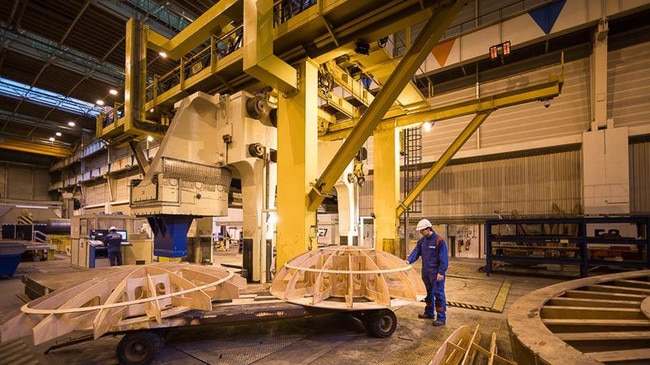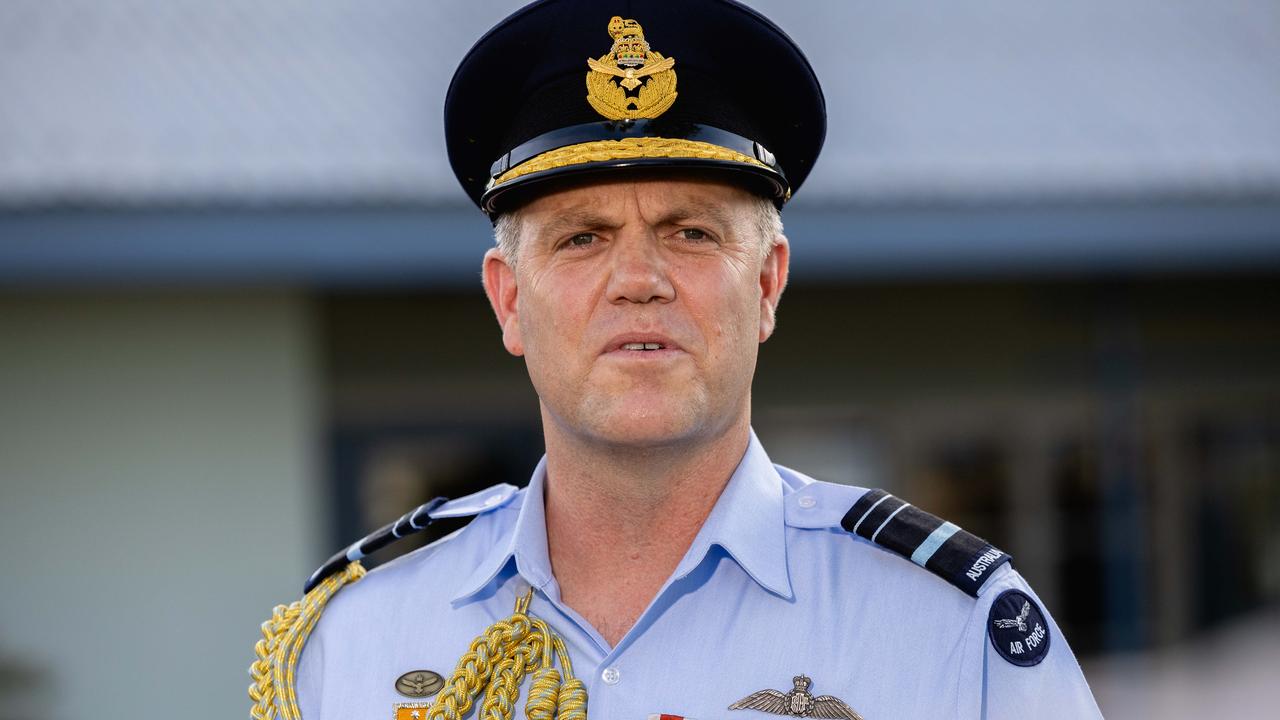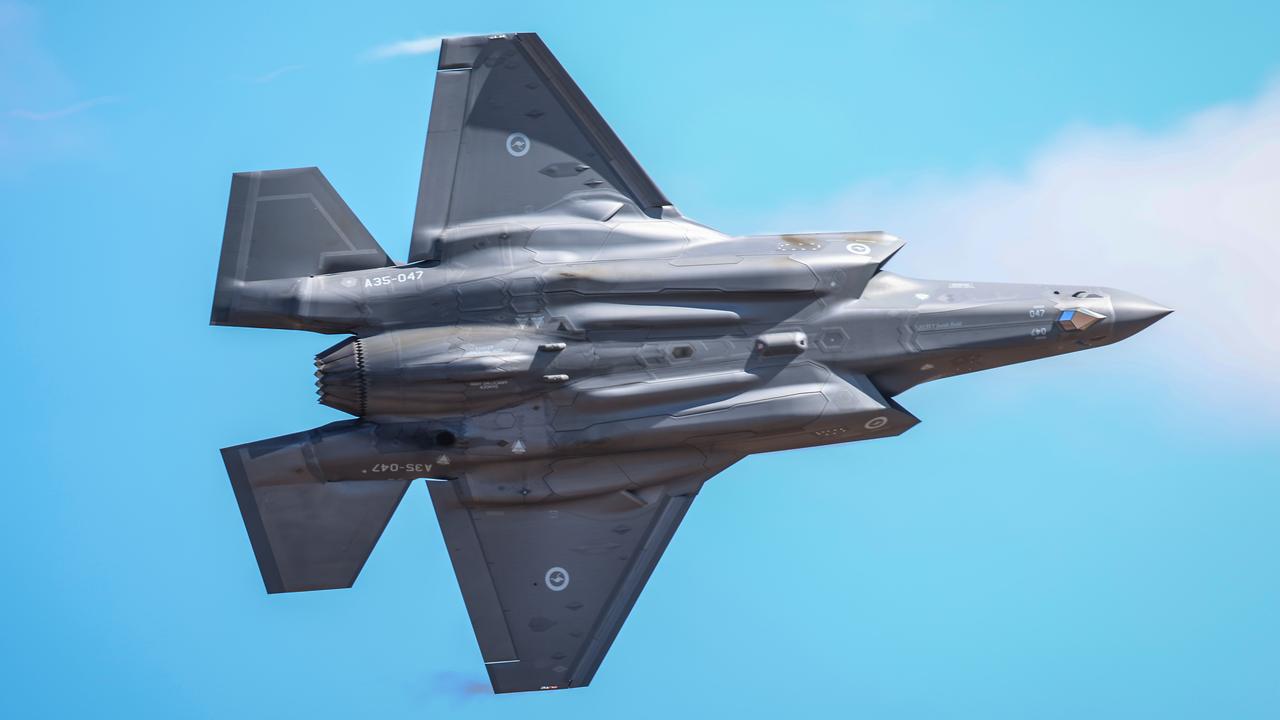Hull construction for first submarine on track despite teething problems
Construction of the pressure hull for the first of the 12 Attack-class subs remains on schedule to begin in 2024.

Australia’s largest defence procurement, the $89bn future submarine program, has recently encountered some headwinds but construction of the pressure hull for the first of the 12 Attack-class submarines remains on schedule to begin in 2024.
This will follow the completion in 2023 of a hull qualification section. The section will prove procedures, equipment and skills at the submarine construction yard being built by commonwealth-owned Australian Naval Infrastructure at Osborne North near Adelaide to the functional requirements of Project Sea 1000’s French-owned design and build partner, Naval Group.
Phase one works at Osborne North will be completed mid next year, providing the yard with a combat system physical integration facility and a land-based propulsion system test site. Build of the main construction facility will start next year.
Delivery to the RAN of the first of the Attack-class is not anticipated until 2032. Two or more years of rigorous test and evaluation will follow before the boat enters service as the first replacement for the RAN’s six in-service Collins-class submarines.
The other 11 submarines will be constructed at a nominal drumbeat of one every two years with three boats in build at any one time, placing final delivery in the early 2050s. The yard will, however, have the capability to accelerate that rate if required.
Program tensions and delays were reported by the Australian National Audit Office in January, followed in February by concerns regarding Australian industry workshare, and an apparent increase in program cost.
The five-week delay in completing the systems requirements review late in January would be recouped by a January 2021 start to the systems functional review, Greg Sammut, Defence’s general manager submarines, told The Australian.
Basic design
The SFR will define the functional baseline for the Attack-class, completing the definition phase of design. The next phase of design, known as basic design, will follow, during which main layouts will be determined and system functional diagrams will be completed.
Basic design is scheduled to conclude in 2023 after which detailed design will begin.
Controversy over the likely size of domestic industry involvement in the future submarine program had resulted in a commitment by Naval Group to spend in Australia at least 60 per cent of the value of its contracts for delivery of the Attack-class fleet, Mr Sammut confirmed.
“That doesn’t translate to 60 per cent of a submarine’s design work; for example, it’s going to vary depending on the nature of the work and includes the construction at Osborne of all 12 submarines,” he said.
“The work undertaken in Australia by Naval Group will generally increase over time so it won’t just be a particular percentage of each boat; as time moves on we would expect to see the percentage rise above 60 per cent. We also progressively see increased production in Australia of submarine subsystems, and of components for major equipment such a diesel engines.”
The $9bn increase over six months in the $80bn cost of acquisition quoted by Defence in November last year reflected the fall in the value of the Australian dollar and inflation; the constant cost remained at $50bn in 2016 dollars, Mr Sammut said.
The $50bn included the design and build of the 12 new submarines; design, build and integration of the combat system; investment in science and technology; logistics support including documentation and initial spares; design of the construction yard and its equipment; funding to support design efforts required for new technology; and program contingency.
Different approaches
Although details of the first construction contract were still under consideration it would certainly not be for all 12 boats, Mr Sammut said.
“We would want to make sure that we’ve got the opportunity to look at updates to technology over the life of the program,” he said.
“We will also be considering the different pricing models that would apply to different stages of the program as we get more familiar with the build process.
“You’re retiring risk as you build more boats and that means we might want different pricing models for subsequent boats.”
Although all 12 Attack-class would be built at North Osborne, consideration was being given to Australian workers building several complex hull parts for the first-of-class in France as the most efficient way of transferring knowledge. Possible parts included the elliptical waterproof bulkheads at the bow and stern, and the hull softpatch through which engines could be removed.
Cultural differences had resulted in different approaches to the disciplines involved in the program, Mr Sammut said.
“We’re ensuring there are strong program management practices in place so we can deliver a submarine with the capability required by the navy, on time and on budget,” he said.
Although Naval Group Australia declined to be interviewed for this article following media reports that it had paid staff early financial bonuses to support them during the COVID-19 period, NGA chief executive John Davis earlier acknowledged some cultural differences, but with a positive outcome.
While French designers worked in a fluid environment in which the objective was the most important thing, sparking great innovation, for Australia being predictable was as important as the outcome.
“Somewhere between the two is the answer — you don’t want to kill all the innovation but equally you can’t have a free-rein type of environment,” Mr Davis said.



To join the conversation, please log in. Don't have an account? Register
Join the conversation, you are commenting as Logout